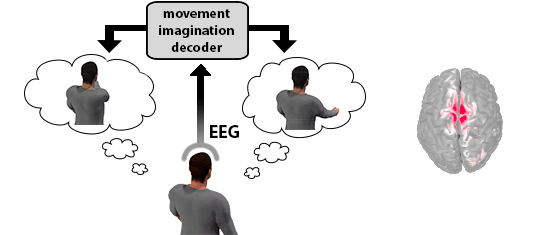Patrick Ofner and Gernot R. Müller-Putz, Graz University of Technology, Austria
Volume 62, Issue 3, Page: 972-981

Persons with spinal-cord injury (SCI) have lost a certain amount of movement functions, and a brain-computer interface (BCI) can help to overcome these movement deficits. Ideally, such a BCI decodes the exact and detailed movement intention, i.e., imagined trajectories of body parts, and transforms them into a control signal for a neuroprosthesis or a robotic arm restoring movement. This would establish a direct link between the intended movement and the movement executed by the neuroprosthesis facilitating a natural and intuitive movement control. Robotic arms have already been controlled successfully by means of invasive recording techniques, and executed movement trajectories have been decoded using non-invasive decoding techniques. However, it is unclear if imagined movement trajectories can be non-invasively decoded using electroencephalography (EEG). Current non-invasive state of the art BCIs can detect the body part which is subjected to movement imagination but not the exact detailed movement imagination, i.e., the movement trajectory of the body part. However, this is necessary for a natural and intuitive neuroprosthesis control. In our work, we made progress towards decoding the trajectory of imagined movements and successfully classified horizontal and vertical imagined rhythmic movements of the right arm in healthy subjects using EEG. Notably, we developed a paradigm which allowed us to perform a movement decoding experiment without provoking eye movements to prevent them affecting classification results. Furthermore, the brain areas contributing to the decoding are of special interest. However, the EEG channels were highly correlated which prevented a simply interpretation of classifier weights. Therefore we applied partial least squares to localize the brain areas contributing to the decoding in the sensor, as well as in the source space, and found a strong involvement of the supplementary motor area. Find more information about our research on http://bci.tugraz.at.
Keywords: brain-computer interface, EEG, movement decoding, movement imagery

